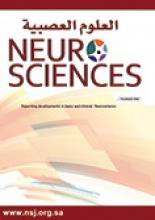Abstract
OBJECTIVE: Many psychiatric patients have nicotine and other substance dependence. The goal of this research is examining the frequencies of nicotine and opium dependence among psychiatric inpatients in Kerman, Iran.
METHODS: Three groups of psychiatric inpatients, chronic medical patients and a sample from the local population, each including 400 subjects were selected. Psychiatric patients were evaluated in Kerman Psychiatric Hospital, Kerman, Iran in the year 2001. Nicotine dependence was evaluated via Fagerstrom test for nicotine dependence, score above 7 was considered positive for nicotine dependence. Opium dependence was evaluated by semi-structured interview based on The Diagnostic Manual of Mental Disorders, 4th edition.
RESULTS: One hundred and fifteen (28.75%) psychiatric patients had nicotine dependence which was higher than 2 other groups (X2=4, degrees of freedom (df)=4, p<0.0001). One hundred and forty (35%) psychiatric patients had opium dependence which did not differ from chronic medical patients but was higher than the third group (X2=21.97, df=2, p<0.0001). Frequencies of nicotine and opium dependence were higher among male subjects in all 3 groups. Highest frequencies of nicotine and opium dependence were seen among patients with post traumatic stress disorder (PTSD). The highest coefficient of contingency between nicotine dependence and opium dependence was seen among psychiatric patients.
CONCLUSION: Psychiatric patients are predisposed to substance dependence. One plausible reason for opium dependence in our patients is cultural factors. Substance dependence associated with other psychiatric disorders should be considered by treating physicians in any treatment plan.
- Copyright: © Neurosciences
Neurosciences is an Open Access journal and articles published are distributed under the terms of the Creative Commons Attribution-NonCommercial License (CC BY-NC). Readers may copy, distribute, and display the work for non-commercial purposes with the proper citation of the original work.






